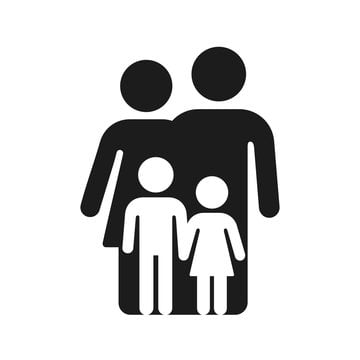Mastering the Silent Language: A Comprehensive Guide to Nonverbal Communication
Effective communication extends far beyond the spoken word; it's a nuanced dance of unspoken cues and subtle gestures. This guide delves into the intricate world of nonverbal communication, exploring its multifaceted nature and offering practical strategies to elevate your interpersonal skills and foster stronger connections. Mastering this silent language is key to success in both personal and professional spheres.
Nonverbal communication, often conveying more than words themselves, encompasses a wide array of signals. From the slightest flicker of an expression to the carefully measured distance between individuals, every posture, gesture, and tone contributes to the overall message. A deep understanding of these nonverbal cues is crucial for achieving impactful and meaningful communication.
Decoding the Signals: Key Elements of Nonverbal Communication
Let's dissect the key components of this silent language, examining how each contributes to the overall message transmitted.
Facial Expressions: The Window to Inner Emotions
The human face is a remarkable canvas, capable of expressing a vast spectrum of emotions—from the obvious joy and sadness to more subtle nuances of thought and feeling. Developing self-awareness of your own facial expressions is the first crucial step. Are your expressions accurately reflecting your intended message? Mindful practice in mirroring emotions helps ensure consistency between internal feelings and external presentation.
Body Language: Posture, Presence, and Power
Body language is a powerful communicator. A confident posture projects assurance and authority, while a slumped stance might signal discouragement or insecurity. Understanding how your body language impacts others is vital. Strive for open, inviting postures, employing gestures purposefully to emphasize key points. Avoid distracting movements; ensure your gestures align seamlessly with your spoken message.
Gestures: The Art of Expressive Movement
Hand gestures, nods, and subtle shrugs can add significant depth and meaning to your communication. A simple pointing gesture clarifies; a nod confirms agreement. Mastering effective gesturing enhances clarity and engagement, ensuring your message resonates powerfully with the audience. However, avoid excessive or distracting movements; keep gestures purposeful and congruent with the verbal message.
Eye Contact: The Bridge to Connection
Eye contact is a potent tool for establishing trust and connection. Maintaining appropriate eye contact demonstrates attentiveness and sincerity, while avoiding it may project disinterest or dishonesty. Cultivate comfortable eye contact, mindful of cultural norms, to build rapport and elevate your communication effectiveness. This nonverbal cue is essential for forging genuine connections.
Proximity: Navigating Personal Space with Sensitivity
The physical space we maintain around ourselves significantly influences interactions. Encroaching on personal space can cause discomfort, while excessive distance can hinder connection. Understanding and respecting personal boundaries is crucial, adjusting proximity based on the relationship and the context of the interaction.
Touch: A Powerful, Yet Delicate Tool
Touch can convey a wide array of emotions, from comforting empathy to aggressive hostility. A supportive touch differs vastly from a hostile gesture. Exercise caution and awareness when using touch; always respect boundaries and use it appropriately to strengthen bonds or offer solace, never causing offense.
Tone of Voice: The Melody of Meaning
The tone of voice significantly shapes the meaning of words. A sarcastic tone can undermine even the most positive message, while a gentle tone can soften criticism. Cultivate a flexible vocal tone that complements your message, ensuring your words carry the intended emotion and impact. The melody of your voice is as crucial as the lyrics.
Silence: The Power of Strategic Pauses
Silence, when used strategically, can be an incredibly potent communication tool. A thoughtful pause before responding demonstrates reflection and consideration, while uncomfortable silence can create tension. Learn to harness the power of silence to emphasize points, allow for reflection, and control the flow of conversation.
Microexpressions: Unveiling Fleeting Emotions
Microexpressions—brief, involuntary facial expressions—can reveal underlying emotions, even when consciously concealed. Observing these fleeting glimpses requires keen attention, but can provide invaluable insights into a person's true feelings. Training your observation skills in this area can be highly rewarding.
Cultural Nuances: Navigating Global Differences
Nonverbal cues are profoundly shaped by culture; a gesture deemed positive in one culture may be offensive in another. Understanding and respecting these cultural differences is essential for effective cross-cultural communication. Familiarize yourself with diverse nonverbal communication styles to foster inclusivity and prevent misinterpretations.
Mirroring: Building Rapport Through Subtle Reflection
Subtly mirroring another person's body language can create an unconscious sense of connection and rapport. This mirroring, when done naturally and subtly, signals empathy and understanding, fostering a more harmonious interaction. It is a powerful technique for building trust and connection.
Context is Paramount: Understanding the Situation
Always interpret nonverbal cues within their context. A smile in a social setting conveys joy; the same smile at a funeral would be deeply inappropriate. Context is vital for accurate interpretation and preventing miscommunication. Failing to consider context can lead to significant errors in understanding.
Congruence: Aligning Words and Actions for Clarity
For truly effective communication, verbal and nonverbal cues must be in alignment. Incongruence—such as saying "I'm fine" while visibly upset—creates confusion and erodes trust. Strive for congruence to ensure your messages are clear, consistent, and credible.
Honing Observational Skills: Practice and Refinement
Mastering nonverbal communication is a journey of continuous learning and practice. Pay close attention to subtle cues, refining your ability to interpret and respond appropriately. The more you observe and practice, the more adept you'll become at deciphering the silent language.
Continuous Learning: Embracing the Ongoing Journey
Like any skill, mastering nonverbal communication demands consistent effort. Experiment with diverse techniques, seek feedback from others, and actively pursue opportunities for growth and learning. The more you invest in this skill, the more naturally and effectively you will communicate nonverbally, enriching your interactions and building stronger relationships.
By understanding and expertly employing these aspects of nonverbal communication, you can dramatically enhance your interactions, cultivate stronger relationships, and achieve greater success in all facets of life. Embrace the power of the silent language and unlock its potential to connect meaningfully with others.


